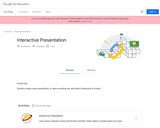
Students create a new presentation, or take an existing one, and make it interactive in Scratch.
- Subject:
- Applied Science
- Computer Science
- English Language Arts
- Material Type:
- Activity/Lab
- Author:
- Date Added:
- 04/10/2020

Students create a new presentation, or take an existing one, and make it interactive in Scratch.
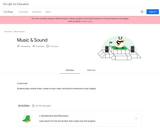
Students play musical notes, create a music video, and build an interactive music display.
Music & Sound is a complete theme designed to be completed over eight, 45-75 minute sessions. For each Activity, students will watch a series of videos and create one coding project with opportunities to personalize their work using “Add-Ons,” which are mini-coding challenges that build on top of the core project.

Students take an existing story and explore first and third person point of view.
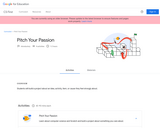
Students will build a project about an idea, activity, item, or cause they feel strongly about.
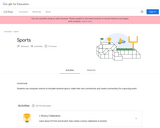
Students use computer science to simulate extreme sports, make their own commercial, and create commentary for a sporting event.
Sports is a complete theme designed to be completed over eight, 45-75 minute sessions. For each Activity, students will watch a series of videos and create one coding project with opportunities to personalize their work using “Add-Ons,” which are mini-coding challenges that build on top of the core project.
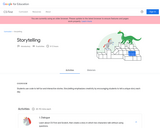
Students use code to tell fun and interactive stories. Storytelling emphasizes creativity by encouraging students to tell a unique story each day.
Storytelling is a complete theme designed to be completed over eight, 45-75 minute sessions. For each Activity, students will watch a series of videos and create one coding project with opportunities to personalize their work using “Add-Ons,” which are mini-coding challenges that build on top of the core project.

Students will apply their knowledge of characterization by coding a sample character’s thought, actions, and words.
Lesson credit to Google CS First Curriculum

The Code-a-Pillar teaches the basics of coding, using sequencing and programming, with segments of the caterpillar's body. Each of the eight segments is labeled with different symbols and colors. The students will put them together, attach them to the caterpillar's smiling, blinky-eyed, motorized head, and press a button to get the whole toy to move.
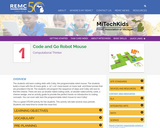
The students will learn coding skills with Colby, the programmable robot mouse. The students build a maze with the 16 maze grids, a 20" x 20" maze board, 22 maze wall and three tunnels that are provided in the kit. The students will program the sequence of steps and Colby will race to find the cheese. There are also 30 double-sided coding cards, 10 double-sided activity cards, a cheese wedge, and an activity guide to provide the perfect hands-on introduction to coding concepts. You can even add Jack the programmable robot mouse to race Colby!

So you have robots...now what? How do you manage them? These coding punch cards can be customized and used to offer students activity choices while managing your learning environment.

Dash and Dot are robots that can sense, act and think! Coding with robots is great fun!! Students use block coding iPad apps to control their robots. Students will have a ball designing, testing theories and refining their code to create paths for the robots to follow.

Code Monkey is an engaging coding program for students starting at preschool. Students will help an adorable monkey get his bananas back from a greedy gorilla who stole them. As students progress, they will meet other characters like a trusty turtle, who will help them with challenging problems. Each answer students submit will be graded automatically giving students instant feedback.
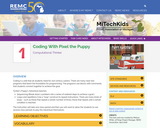
Coding is a skill that all students need for 21st century careers. There are many neat new programs that teach the foundation for programming. The programs use blocks with commands that students connect together to achieve the goal.
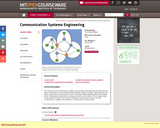
" This course will cover fundamentals of digital communications and networking. We will study the basics of information theory, sampling and quantization, coding, modulation, signal detection and system performance in the presence of noise. The study of data networking will include multiple access, reliable packet transmission, routing and protocols of the internet. The concepts taught in class will be discussed in the context of aerospace communication systems: aircraft communications, satellite communications, and deep space communications."
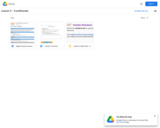
An introduction to using conditionals in Scratch
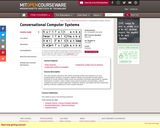
" This class explores interaction with mobile computing systems and telephones by voice, including speech synthesis, recognition, digital recording, and browsing recorded speech. Emphasis on human interface design issues and interaction techniques appropriate for cognitive requirements of speech. Topics include human speech production and perception, speech recognition and text-to-speech algorithms, telephone networks, and spatial and time-compressed listening. Extensive reading from current research literature."
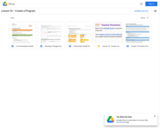
A basic design plan to help upper elementary students develop a project of their choosing with a team

DescriptionOverview: This lesson allows students to work on their keyboarding skills while creating pieces of music. Students can choose classiccal music, current hits, or just play around with the keyboard. Students will then be able to create an app using Code.org's AppLab that uses a recording of the music they play.Subject:Computer Science, Business and Communication Level:Middle School, High School Grades:Grade 7, Grade 8, Grade 9, Grade 10, Grade 11, Grade 12 Material Type:Lesson Plan Author:Jennifer Clark Date Added:04/06/2019License: Creative Commons Attribution-NonCommercial 4.0 Language:English Media Format:Downloadable docs, Interactivehttps://www.oercommons.org/courseware/lesson/53119/overview

Coding with Dash is so much fun! Using the Blockly app, students will be able to utilize block coding to plan, create, and execute a dance for Dash. This task card can be used with grades 3-5.
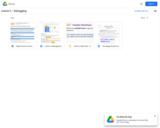
An introduction to debugging for upper elementary students